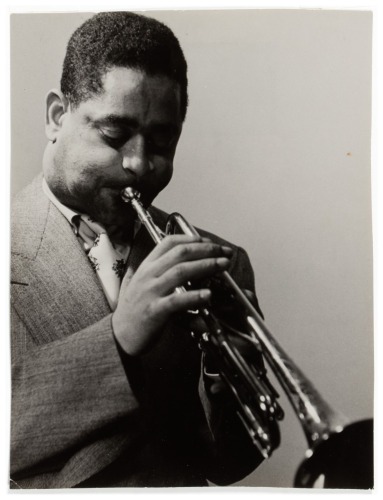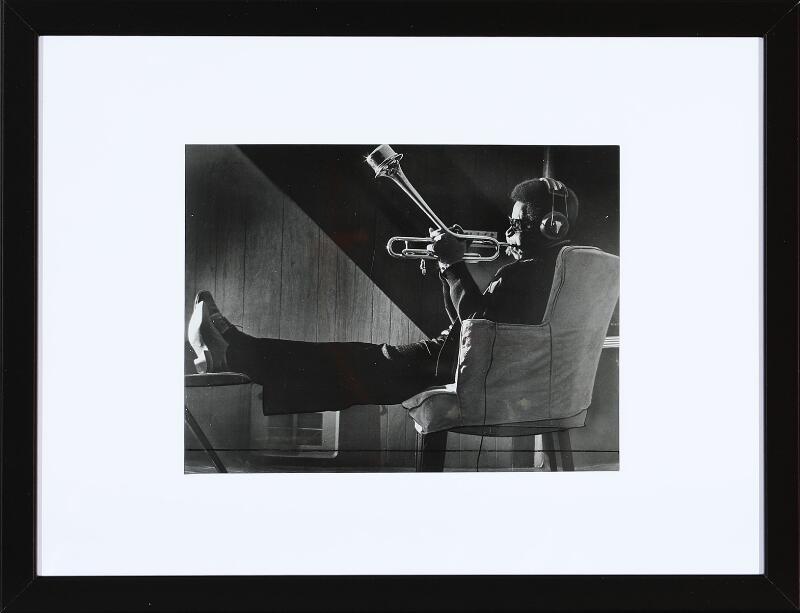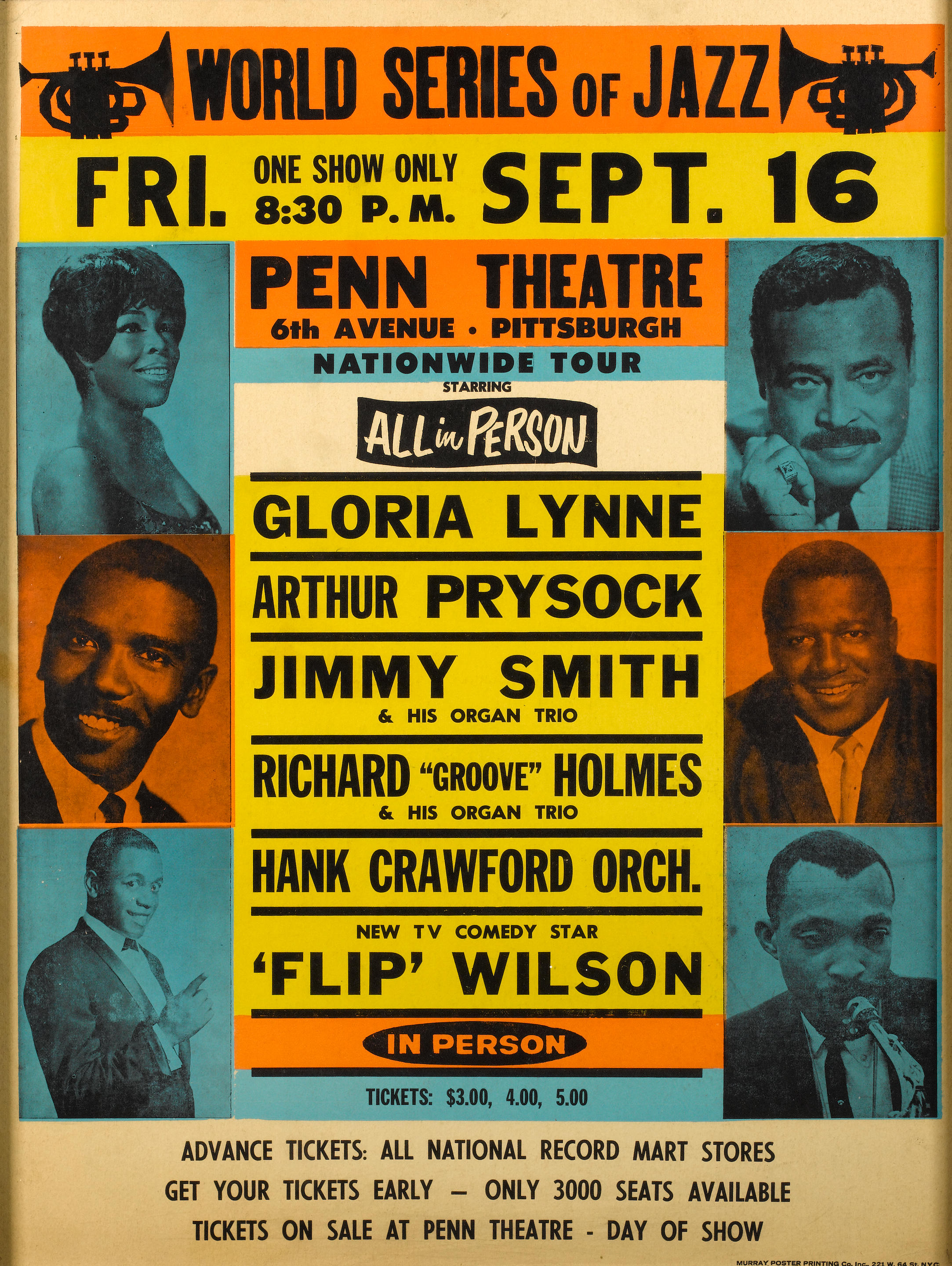DIZZY GILLESPIE A MARTIN COMMITTEE TRUMPET Dizzy Gillespie 1917-1993, is one of the most important figures in the history of Jazz. Together with Charlie Parker, he is acknowledged as the founding father and originator of the "bebop" style of composing and improvising. His virtuosity and harmonic sophistication paved the way for succeeding generations of players and his highly innovative approach to the trumpet and its role within different instrumental formats helped to forge modern jazz as a wordwide movement. His experiments with musical form and the fusion of elements from different cultures has engendered diverse styles ranging from Afro-Cuban jazz to the avant garde. His contribution has had tremendous influence and he has played a major role in the development of music in the 20th century. Silver plated 4 3/4 " bell set at a forty five degree angle to the body with floral engraving and The Martin Committee, Elkhart, Ind, USA, and Dizzy Gillespie inscribed, gold plated brass body with serial no. 219959, three piston valves and tuning slide. With rectangular black Martin case and accompanied by felt mute, postcard, two pieces of May Fair Hotel notepaper, two religious cards in plastic sleeves and a small ski boot on a key ring. This trumpet was given to Reid Vogelhut when he visited Dizzy Gillespie at his home in Englewood, New Jersey in 1970. Reid first met Dizzy at a concert in 1960, and they became lifelong friends. The bell of this trumpet was originally on Dizzy Gillespie's straight Martin Committee model. In the early 1950s Dizzy played for his wife Lorraine at her birthday party. Two dancers named Stump and Stumpy were also performing, and during their act one of them tripped and fell onto the trumpet, bending the bell upwards. Dizzy then picked up the trumpet to play it and realized that with the bell in this position, he could hear himself more clearly because the sound travelled differently. He is reported as having said "I can hear my mistakes quicker" Dizzy used the trumpet for performing and recording up until 1970. During this period the body of the trumpet was changed three times in order to modify and refine the sound, and strengthen the junction with the bell. The current Martin body dates from 1964. Dizzy had the water keys (spit valves) on the tuning slide and the third valve removed in order to help create a purer sound and pitch. Over the years, there have been many entertaining stories about Dizzy Gillespie. This instrument bears witness to one of the most amusing. On the bell, there are two small pronounced dents. These date from Dizzy's world tour as Cultural Ambassador for the State Department in the 1950s. While he was visiting India, he sat in with a snake charmer and started to play. When the King Cobra rose up and saw him, the snake decided to attack and this instrument appears to have saved his life. The Martin Committee has been used on many recordings and is featured on the cover of Live At The Village Vanguard With a letter of authenticity from Lorraine Gillespie.
DIZZY GILLESPIE A MARTIN COMMITTEE TRUMPET Dizzy Gillespie 1917-1993, is one of the most important figures in the history of Jazz. Together with Charlie Parker, he is acknowledged as the founding father and originator of the "bebop" style of composing and improvising. His virtuosity and harmonic sophistication paved the way for succeeding generations of players and his highly innovative approach to the trumpet and its role within different instrumental formats helped to forge modern jazz as a wordwide movement. His experiments with musical form and the fusion of elements from different cultures has engendered diverse styles ranging from Afro-Cuban jazz to the avant garde. His contribution has had tremendous influence and he has played a major role in the development of music in the 20th century. Silver plated 4 3/4 " bell set at a forty five degree angle to the body with floral engraving and The Martin Committee, Elkhart, Ind, USA, and Dizzy Gillespie inscribed, gold plated brass body with serial no. 219959, three piston valves and tuning slide. With rectangular black Martin case and accompanied by felt mute, postcard, two pieces of May Fair Hotel notepaper, two religious cards in plastic sleeves and a small ski boot on a key ring. This trumpet was given to Reid Vogelhut when he visited Dizzy Gillespie at his home in Englewood, New Jersey in 1970. Reid first met Dizzy at a concert in 1960, and they became lifelong friends. The bell of this trumpet was originally on Dizzy Gillespie's straight Martin Committee model. In the early 1950s Dizzy played for his wife Lorraine at her birthday party. Two dancers named Stump and Stumpy were also performing, and during their act one of them tripped and fell onto the trumpet, bending the bell upwards. Dizzy then picked up the trumpet to play it and realized that with the bell in this position, he could hear himself more clearly because the sound travelled differently. He is reported as having said "I can hear my mistakes quicker" Dizzy used the trumpet for performing and recording up until 1970. During this period the body of the trumpet was changed three times in order to modify and refine the sound, and strengthen the junction with the bell. The current Martin body dates from 1964. Dizzy had the water keys (spit valves) on the tuning slide and the third valve removed in order to help create a purer sound and pitch. Over the years, there have been many entertaining stories about Dizzy Gillespie. This instrument bears witness to one of the most amusing. On the bell, there are two small pronounced dents. These date from Dizzy's world tour as Cultural Ambassador for the State Department in the 1950s. While he was visiting India, he sat in with a snake charmer and started to play. When the King Cobra rose up and saw him, the snake decided to attack and this instrument appears to have saved his life. The Martin Committee has been used on many recordings and is featured on the cover of Live At The Village Vanguard With a letter of authenticity from Lorraine Gillespie.
.jpg)
.jpg)
.jpg)




.jpg)







Try LotSearch and its premium features for 7 days - without any costs!
Be notified automatically about new items in upcoming auctions.
Create an alert